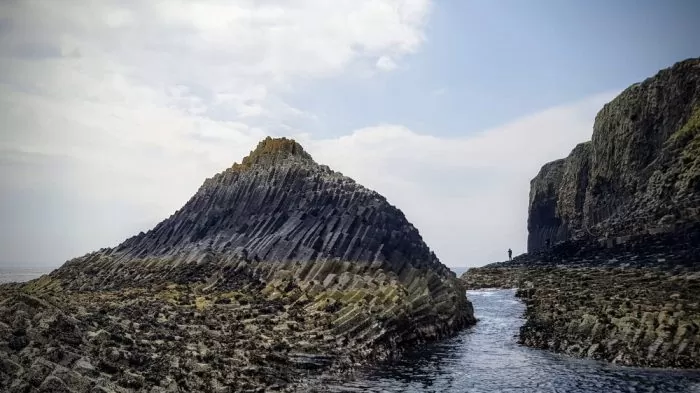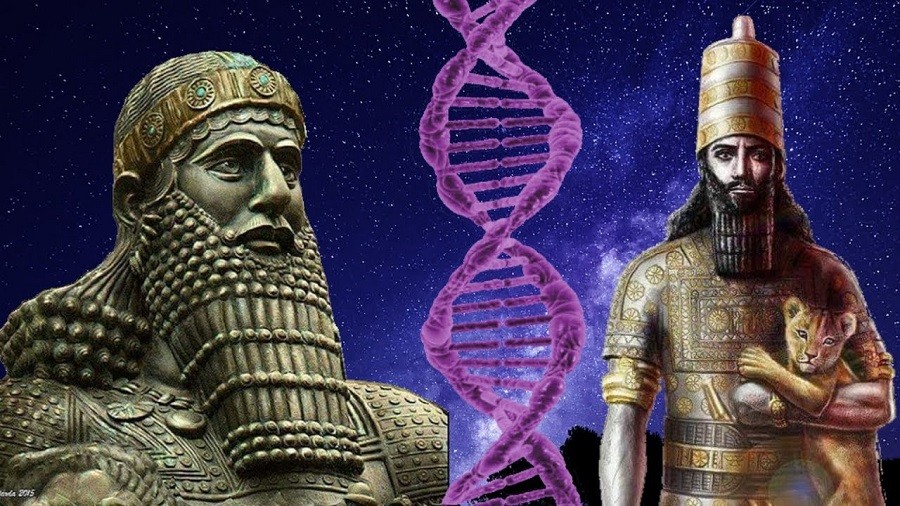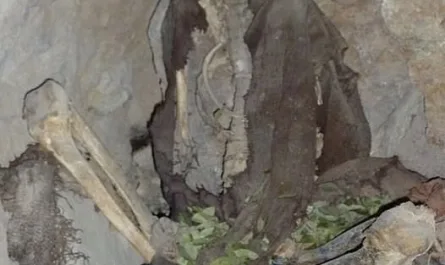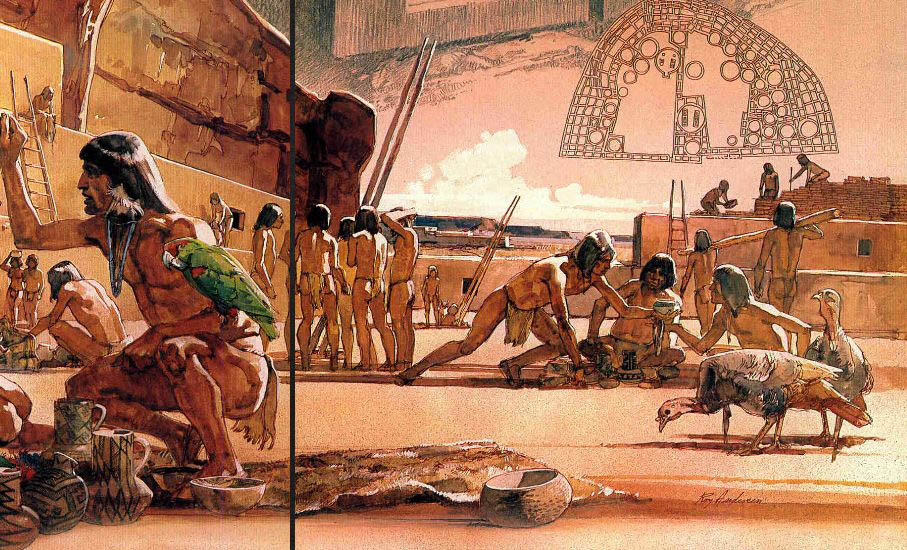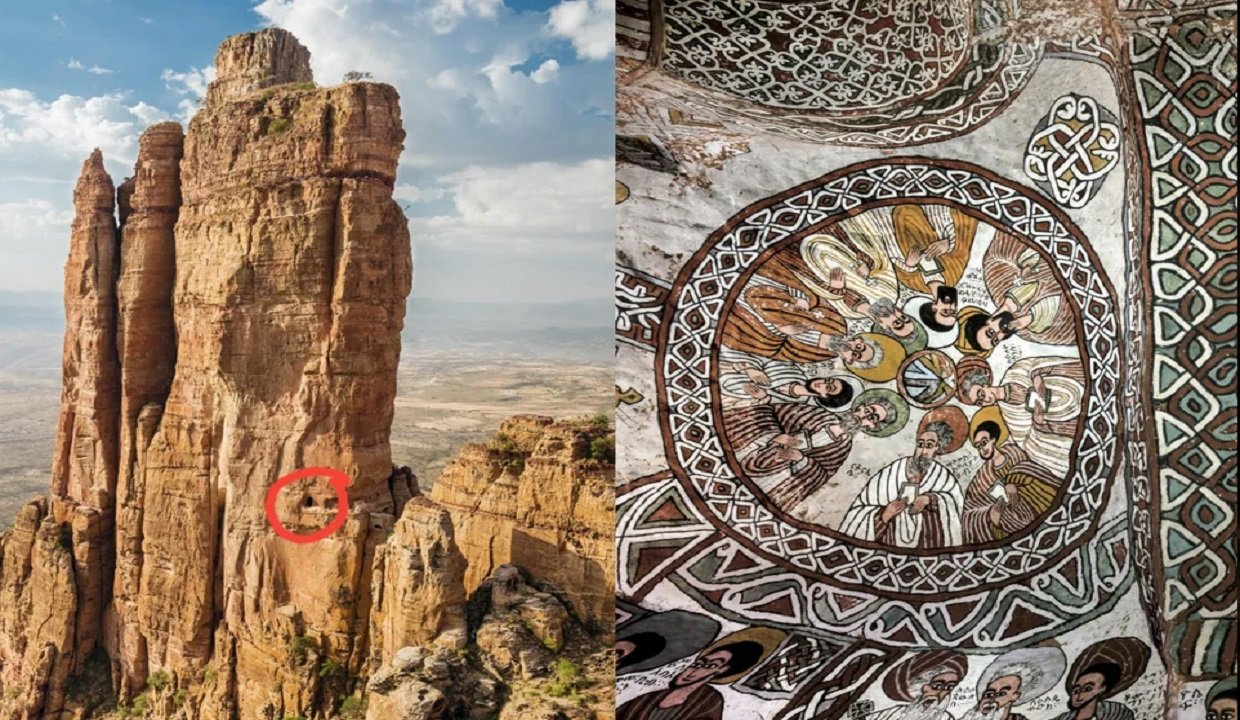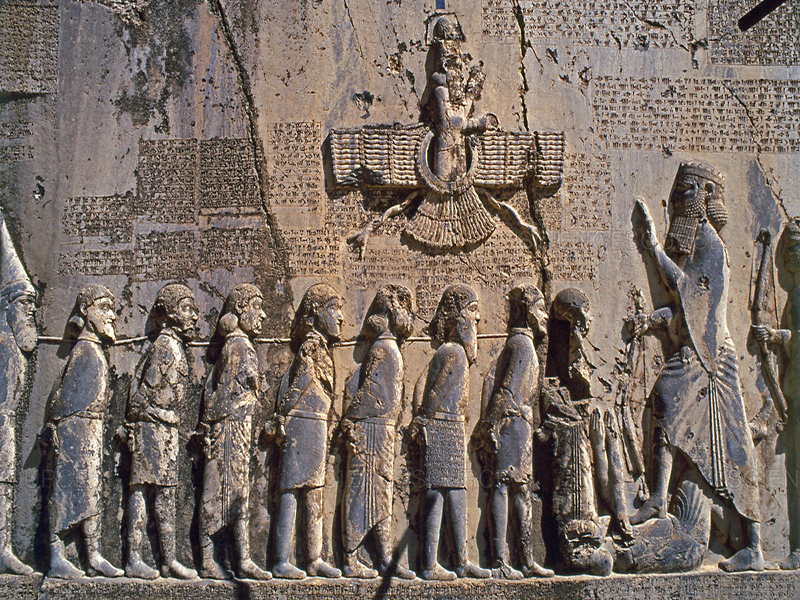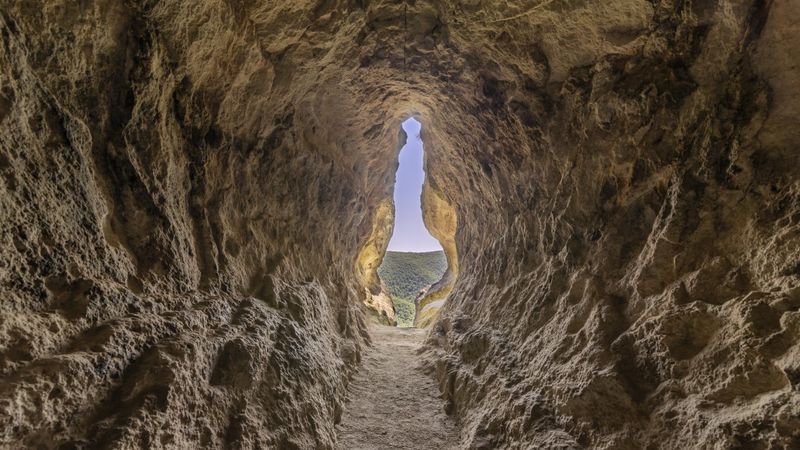Fingal Cave, a stunning geological formation located on the Isle of Staffa, in the Inner Hebrides of Scotland. It is known for its hexagonal basalt columns and its cavernous structure that resembles a natural cathedral.

Fingal’s Cave, most famous of the sea caves in the basalt southwest coast of Staffa, an island of the Inner Hebrides, western Scotland. Estimates of its length vary between 227 feet (69 metres) and 270 feet (82 metres), and its arched roof is said to reach between 66 feet (20 metres) and 72 feet (22 metres) above sea level. It is about 40 feet (12 metres) wide. Its floor is covered by about 25 feet (7.6metres) of water. The cave is embedded in symmetrical, hexagonally jointed basalt columns that were formed from lava flows by cooling and pressure.
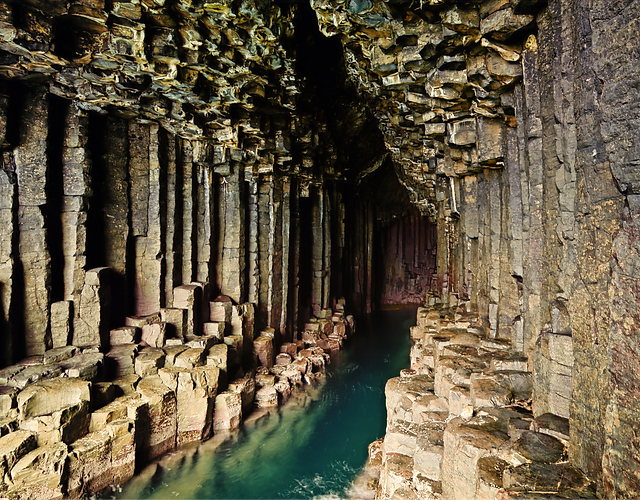
Fingal’s Cave, Staffa island, Inner Hebrides, Scotland
The cave’s arched roof lends it remarkable natural acoustics that harmoniously echo the sound of the swelling ocean waves within it. Fingal’s Cave shares its geological origins with the Giant’s Causeway of Northern Ireland, to which it may have once been connected by the same massive lava flow. Like the Causeway, its Celtic legendary origins are found by many in the exploits of Finn MacCumhaill (MacCool) of the Fenian cycle of Gaelic literature.
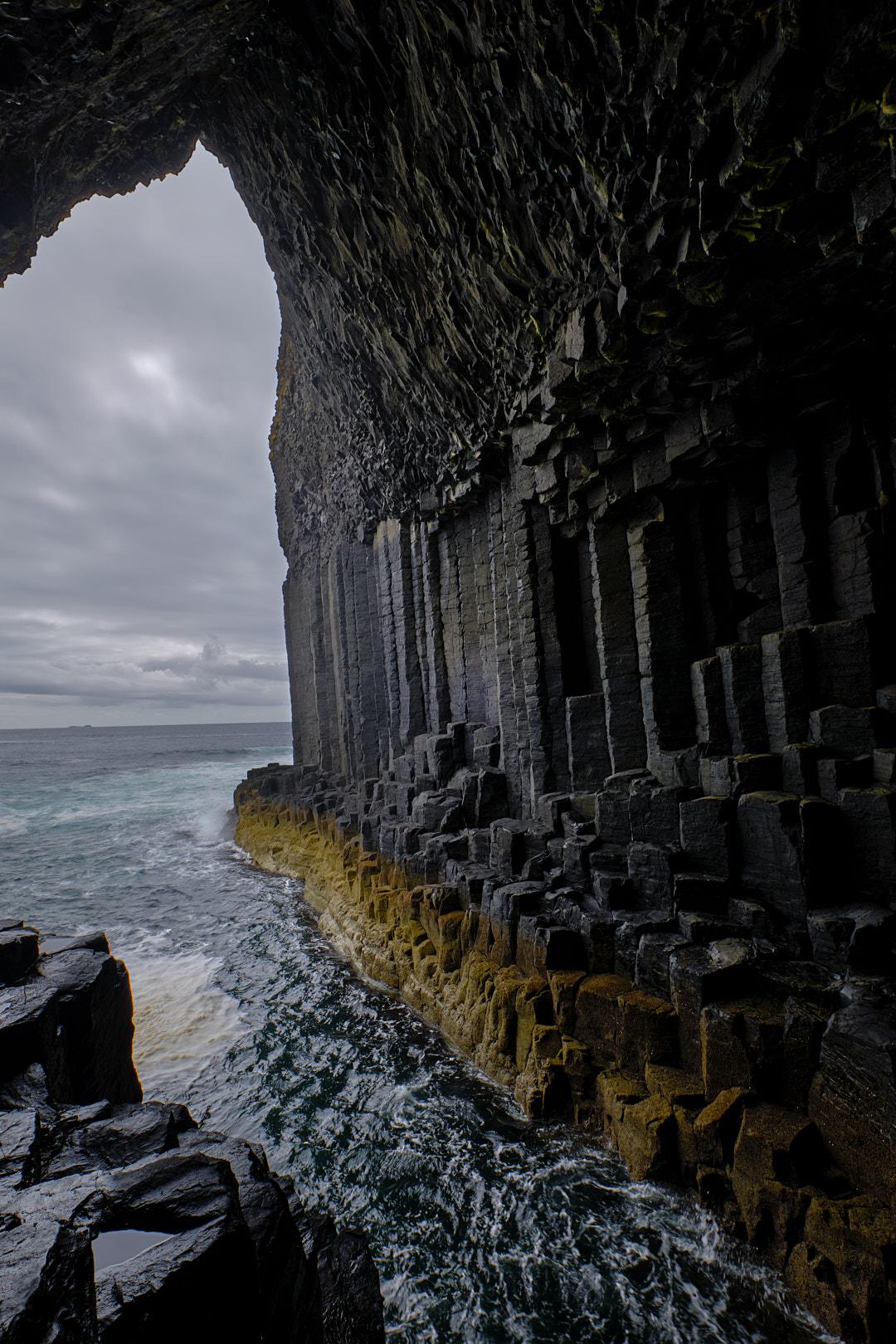
After being “rediscovered” in 1772 by naturalist Sir Joseph Banks, the cave became a tourist magnet. Its famous visitors included Queen Victoria as well as the poets William Wordsworth, Alfred, Lord Tennyson, and John Keats, along with novelists Jules Verne and Sir Walter Scott. Painter J.M.W. Turner rendered it on canvas, and German composer Felix Mendelssohn found in it the inspiration for his overture The Hebrides, Op. 26.
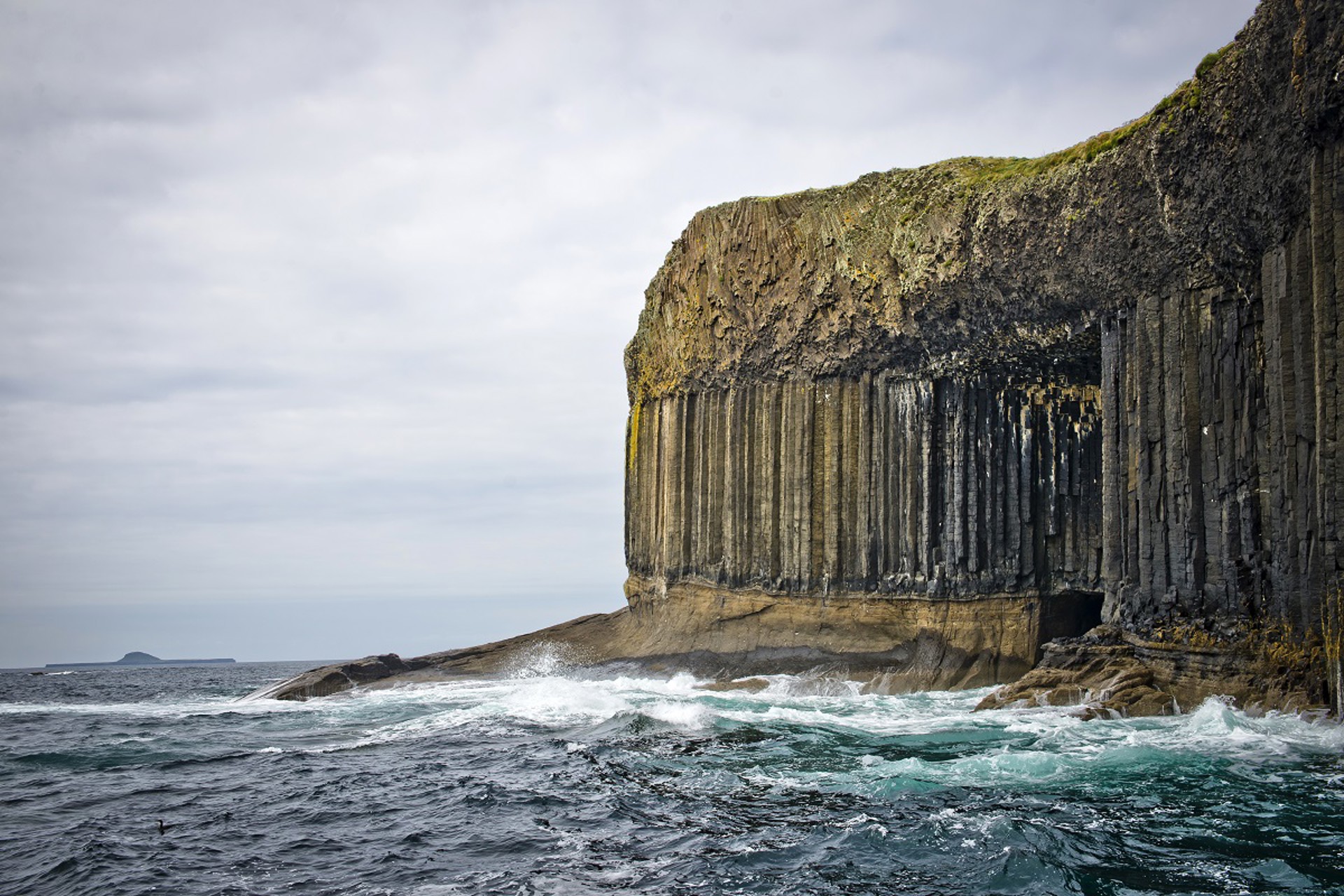
STAFFA ISLAND
Staffa is one of the smallest and most dramatic islands in the area and it has no permanent residents, well not human residents anyway, but more on that later. The name ’Staffa’ is thought to derive from an Old Norse word meaning ‘stave’ like the type used in wooden buildings which is a reminder of regions Viking history.
As gifts go, an island for a birthday present is a monstrous gesture, but that’s exactly what took place when private owner John Elliot gifted Staffa to the National Trust for Scotland in honour of his wife Eleanor’s 60th birthday. As we zipped closer to the big lump of rock, I tried to imagine a large bow attached to its highest point but abandoned that as the spectacular landscape of hexagonal stepping stones and tall pillars came into focus. At its right edge, sucking in gallons of sea water, was the gaping monsters-mouth-like Fingal’s Cave.
Our skipper slipped the boat into neutral and we floated calmly towards the huge cavern on the southern end of the island. It takes discipline, but in situations like this, I try to see the sight through other people’s eyes too. The joy of witnessing something this naturally beautiful is exquisite, but equally joyful is watching others reaction to it. After an initial glance, I turned my attention to my fellow passengers who were peering in silence with awe-filled eyes at the geo-thermic creations of Staffa Island. Magic.
